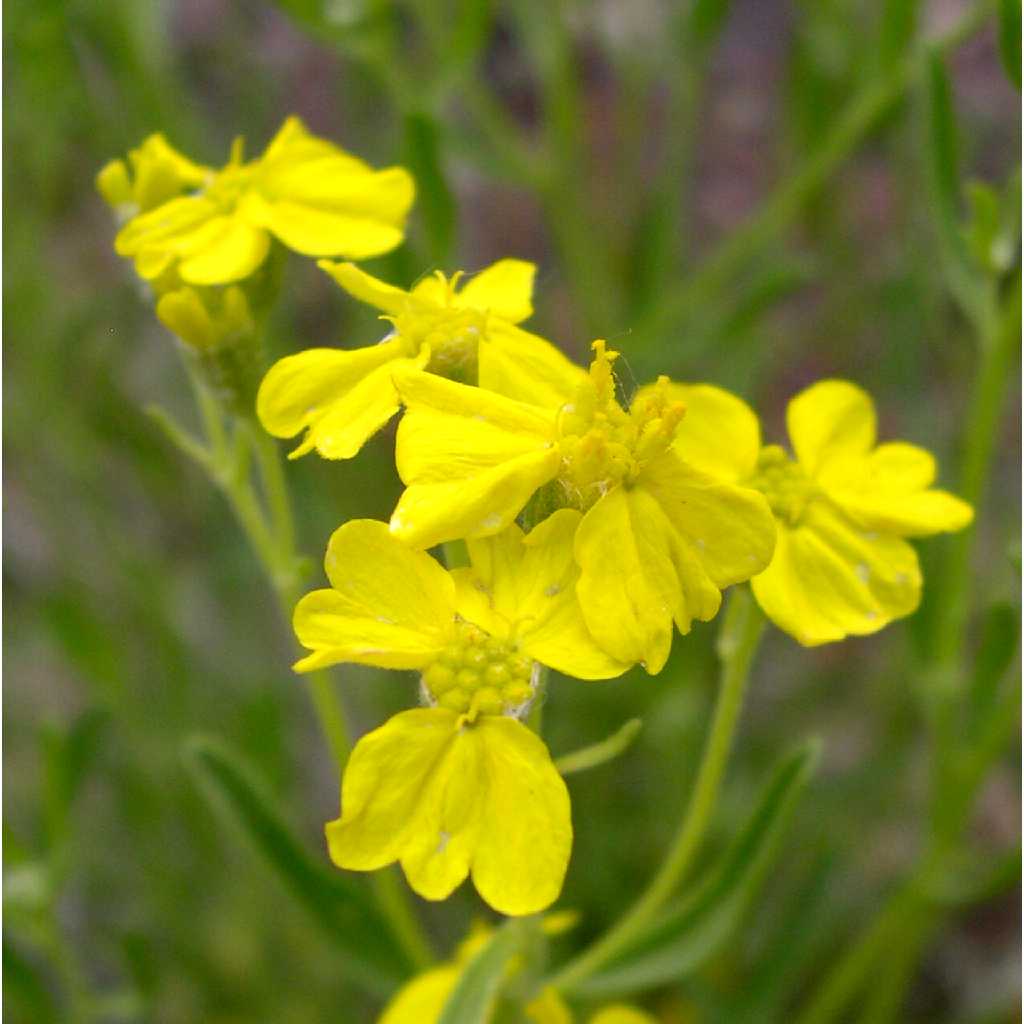Psilostrophe
|
Family: Asteraceae |
Biennials, perennials, subshrubs, or shrubs (rarely flowering first year), 8-60+ cm. Stems erect to spreading, branched from bases or throughout (not scapiform). Leaves basal and cauline or all cauline; alternate; petiolate or sessile; blades spatulate to oblanceolate or linear, margins usually entire (sometimes toothed or lobed on larger rosette leaves), faces densely to sparsely arachno-villous or ± strigillose, often gland-dotted as well. Heads radiate, usually in compact, corymbiform arrays or glomerulate clusters (borne singly in P. cooperi). Involucres cylindric to campanulate or obconic, 2-7 mm diam. Phyllaries persistent, 5-12 in 1-2 series (erect in fruit, distinct, oblong to lanceolate, bases ± indurate). Receptacles flat or convex, smooth or ± pitted (without setiform enations, sometimes gland-dotted), epaleate. Ray florets 1-8, pistillate, fertile; corollas yellow to orange (marcescent, spreading or reflexed in fruit). Disc florets 5-25+, bisexual, fertile; corollas yellow to orange, tubes shorter than narrowly cylindric throats, lobes 5, deltate (equal, papillate abaxially). Cypselae cylindric to clavate or obpyramidal, sometimes weakly obcompressed (ray), all striate-ribbed, usually glabrous, sometimes gland-dotted (villous in P. gnaphalodes, sometimes hirtellous in P. tagetina); pappi of 4-8 ± oblong or elliptic to lanceolate or lance-subulate, entire (lacerate in P. gnaphalodes) scales (without prominent midribs). x = 16. My treatment of psilostrophes closely follows that by R. C. Brown (1978). Psilostrophe mexicana R. C. Brown is known from Chihuahua and Durango.
|

